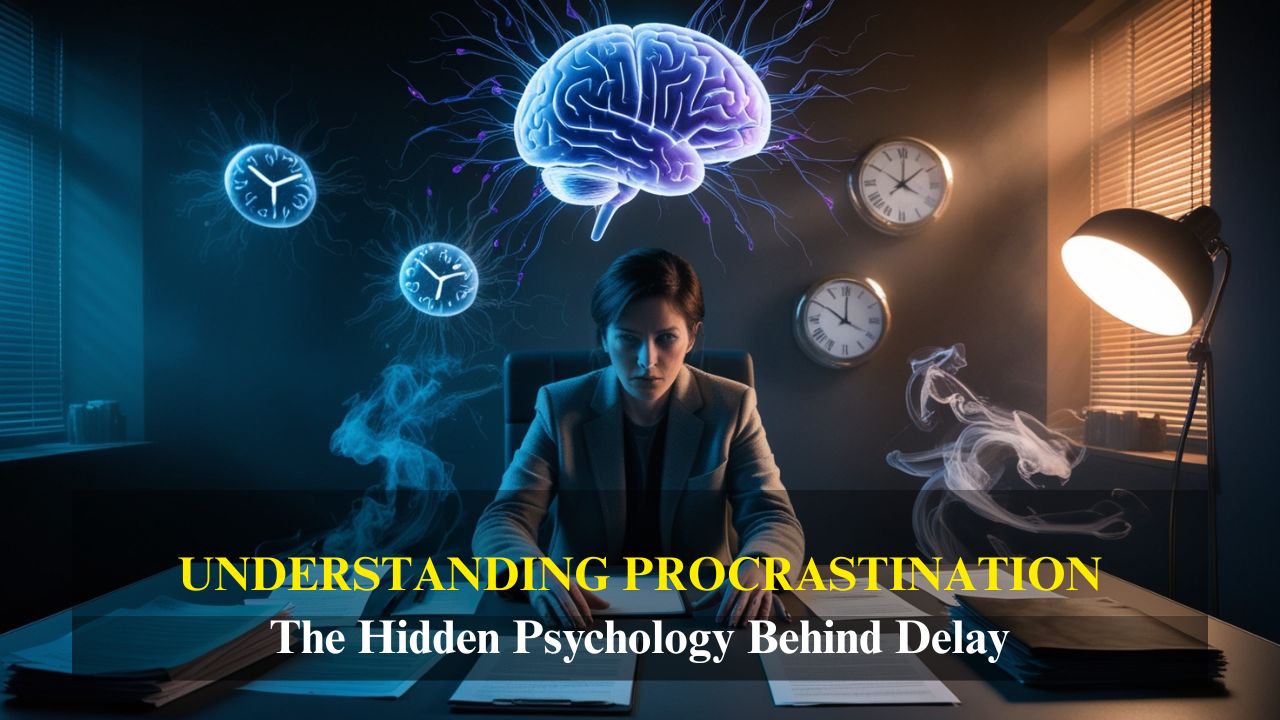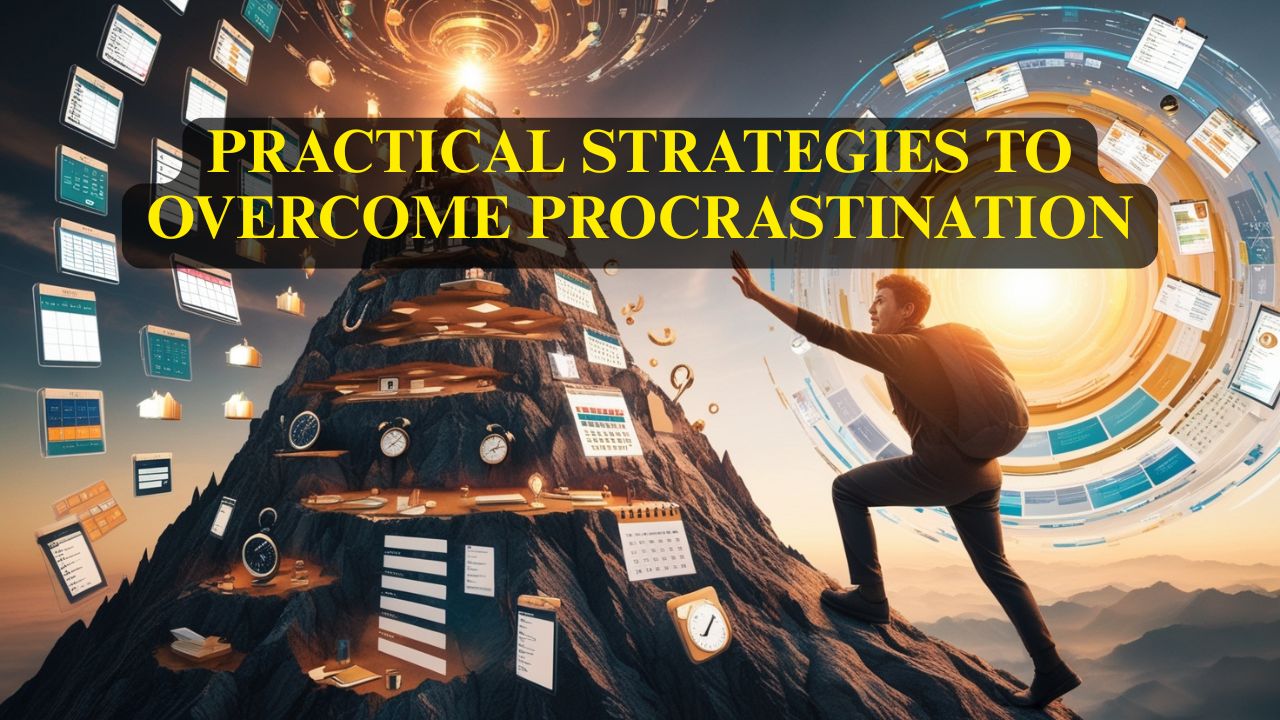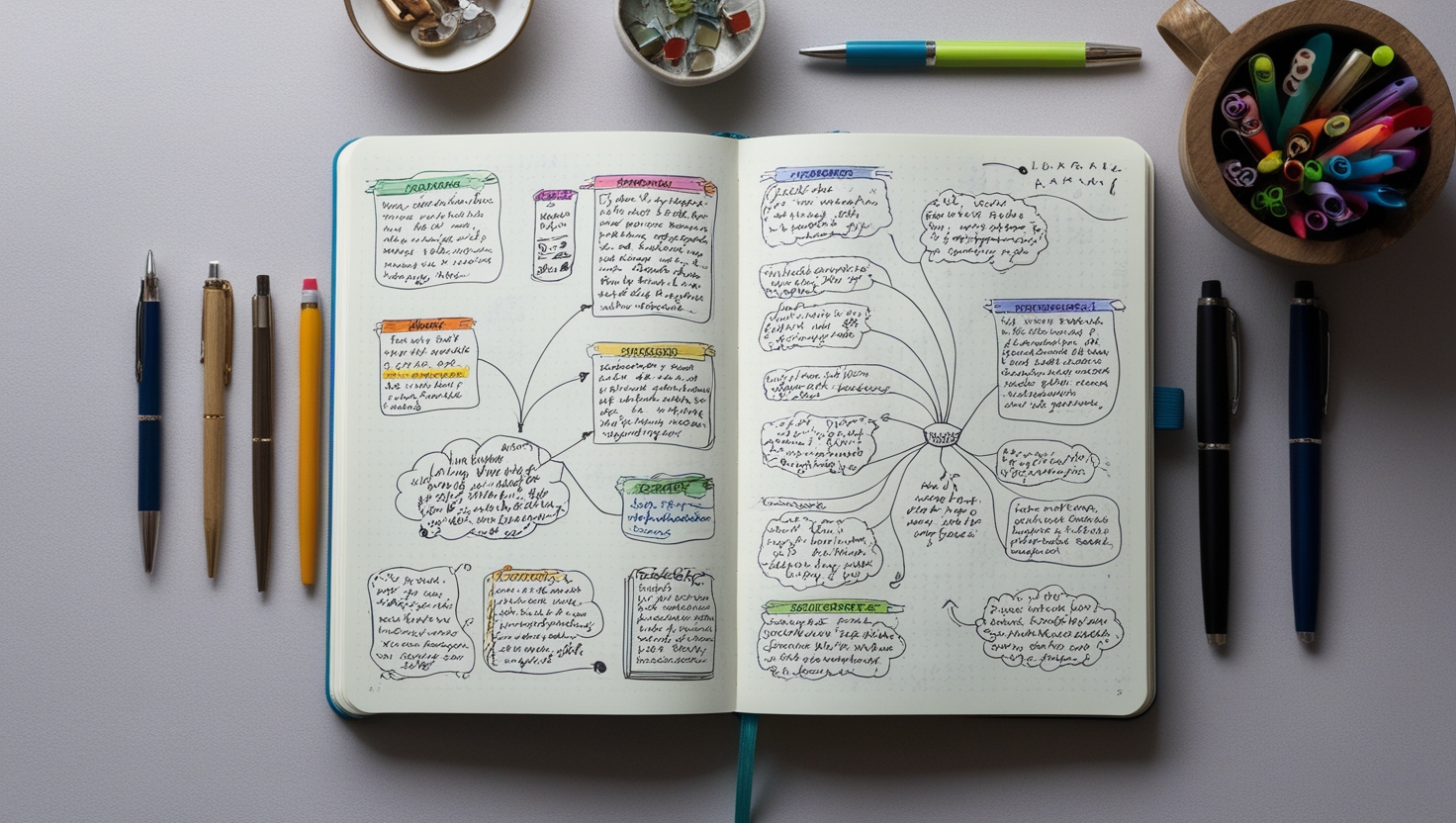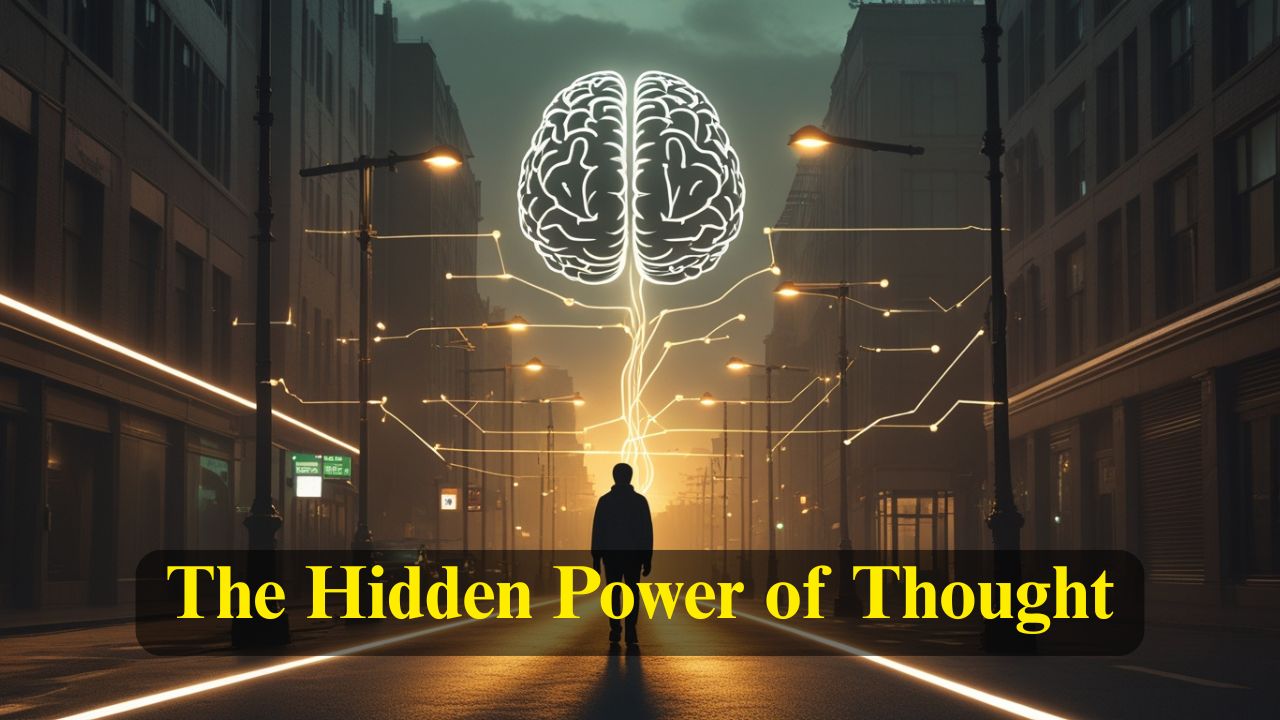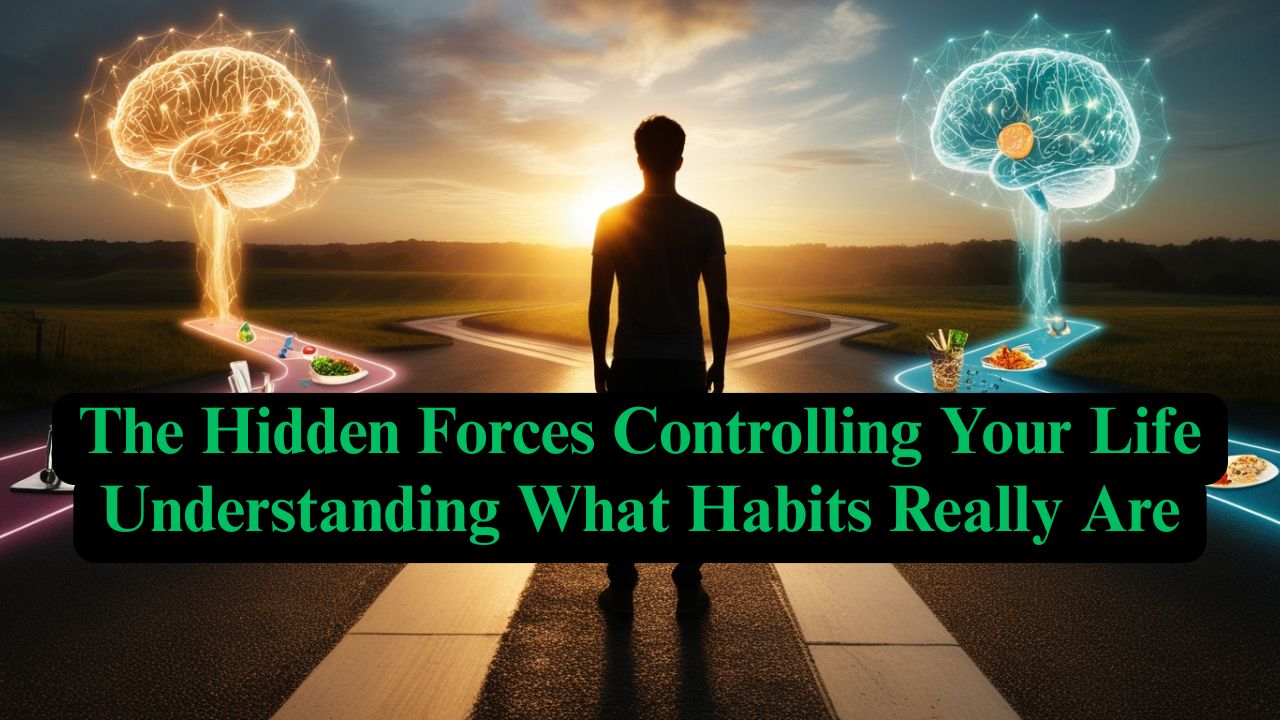Energy Management: Working With Your Natural Rhythms
You know that feeling when you sit down to work on something important, but it feels like you're trying to push a boulder uphill? Your mind is foggy, everything takes twice as long as it should, and you find yourself procrastinating on tasks that normally wouldn't be a big deal.
Then, a few hours later, you tackle the same type of work and it flows effortlessly. Ideas come easily, you're focused and productive, and you wonder why everything felt so difficult earlier.
The difference wasn't your motivation or discipline - it was your energy. Most of us try to manage our time, but what we really need to manage is our energy. Time is finite and the same for everyone, but energy is renewable and completely personal. Learning to work with your natural energy patterns instead of against them can transform both your productivity and your quality of life.
Discovering Your Personal Energy Patterns
Just like some people are naturally morning people while others are night owls, everyone has unique energy patterns throughout the day, week, and even year. The key is becoming aware of your specific rhythms so you can plan your life around them instead of fighting them.
Start by paying attention to your energy levels for a week or two. Set a gentle reminder on your phone to go off every two hours during your waking time. When it chimes, quickly rate your energy level on a scale of one to ten, and note what you're doing and how you're feeling.
You're not trying to change anything yet - just gathering information. After a week, look for patterns. When do you consistently feel most alert and focused? When do you typically hit an energy slump? Are there certain times when creative work flows easily versus when detail-oriented tasks feel more natural?
Most people discover they have two to three peak energy periods during the day, usually lasting one to three hours each. You might be sharp first thing in the morning, hit a slump after lunch, then get a second wind in late afternoon. Or perhaps you're slow to start but build energy throughout the day, peaking in the evening.
There's no right or wrong pattern. The goal is to understand your unique rhythm so you can work with it instead of against it. Many people spend years feeling frustrated with their productivity, not realizing they're simply trying to do demanding work during their natural low-energy periods.
Pay attention to weekly patterns too. Do you feel more energetic at the beginning of the week or toward the end? Are weekends truly restful for you, or do you need different types of recovery? Some people need active recovery through exercise or social activities, while others need complete stillness and solitude.
Even seasonal patterns matter. Many people notice their energy shifts with the amount of daylight, their motivation changes with the weather, or certain times of year consistently feel more or less productive. Acknowledging these larger cycles helps you plan your goals and expectations realistically.
The Four Types of Energy
Energy isn't just one thing - it's actually four interconnected systems that all affect how you feel and function. Understanding each type helps you identify where you might be running low and what you need to restore balance.
Physical Energy This is probably the most obvious one - it's about your body's basic functioning. Physical energy comes from sleep, nutrition, movement, and recovery. When your physical energy is low, everything else becomes harder.
Signs of good physical energy include feeling alert and focused, having steady stamina throughout the day, and bouncing back quickly from physical exertion. Signs of low physical energy include constant fatigue, getting sick frequently, feeling sluggish even after rest, or needing caffeine just to function normally.
Physical energy is foundational - when it's compromised, it affects all the other types. You can't think clearly when you're exhausted, you're more emotionally reactive when you're running on empty, and you lose connection to what matters when you're just trying to survive the day.
Mental Energy Mental energy is your capacity for focus, decision-making, learning, and creative thinking. It's finite - you only have so much mental horsepower each day, and once it's depleted, even simple decisions become overwhelming.
Signs of good mental energy include being able to concentrate deeply, thinking clearly and creatively, making decisions without excessive deliberation, and learning new things easily. Signs of low mental energy include brain fog, decision fatigue, difficulty concentrating, and feeling mentally scattered or overwhelmed.
Mental energy gets depleted by complex problem-solving, making lots of decisions, learning new information, and switching between different types of tasks. It gets restored by mental rest, engaging in activities that require minimal decision-making, and doing things that energize your mind like reading for pleasure or having stimulating conversations.
Emotional Energy Emotional energy is your capacity to deal with feelings - both your own and other people's. It's what allows you to stay positive, handle stress, navigate conflicts, and maintain good relationships.
Signs of good emotional energy include feeling generally optimistic, handling stress without getting overwhelmed, enjoying time with others, and bouncing back quickly from emotional challenges. Signs of low emotional energy include feeling emotionally flat or reactive, avoiding social situations, having little patience for other people's problems, and feeling overwhelmed by normal emotional demands.
Emotional energy gets drained by conflict, stress, negative environments, difficult relationships, and suppressing your feelings. It gets restored by positive connections, activities that bring you joy, time in nature, creative expression, and allowing yourself to feel and process emotions naturally.
Spiritual Energy Spiritual energy is about connection to purpose, meaning, and what matters most to you. It's not necessarily religious - it's about feeling aligned with your values and connected to something larger than yourself.
Signs of good spiritual energy include feeling clear about your priorities, being motivated by internal rather than external factors, feeling connected to your purpose, and experiencing moments of gratitude or awe. Signs of low spiritual energy include feeling like you're just going through the motions, questioning why anything matters, feeling disconnected from your values, and lacking motivation for things you used to care about.
Spiritual energy gets depleted when you're living out of alignment with your values, focusing too much on external validation, or feeling disconnected from meaning and purpose. It gets restored by spending time on what truly matters to you, connecting with nature or beauty, helping others, and reflecting on your deeper values and goals.
How to Match Tasks to Your Energy Levels
Once you understand your energy patterns and the different types of energy, you can start strategically matching your tasks to your energy levels. This is where the magic happens - instead of fighting your natural rhythms, you start dancing with them.
High-Energy Tasks When your energy is at its peak, tackle your most demanding work. This is the time for:
- Complex problem-solving and strategic thinking
- Creative projects that require innovation
- Difficult conversations or negotiations
- Learning new skills or information
- Tasks that require sustained focus and attention
Don't waste your peak energy on mindless busy work or routine tasks. This is prime real estate - use it for what matters most and requires your best thinking.
Medium-Energy Tasks During your moderate energy periods, focus on important but less demanding work:
- Planning and organizing
- Routine communications like emails
- Administrative tasks that require some focus
- Exercise or physical activities
- Social activities that energize rather than drain you
These are the tasks that need to get done but don't require your absolute peak performance. They're perfect for those in-between energy times.
Low-Energy Tasks When your energy is naturally low, don't fight it. Instead, shift to activities that match your capacity:
- Simple, routine tasks that don't require much thinking
- Organizing and cleaning
- Reading or listening to educational content
- Light exercise like walking
- Rest and recovery activities
The key insight here is that low energy doesn't mean wasted time. There are plenty of valuable activities that actually work better when you're in a more relaxed, less intense state.
Energy Restoration Activities Build in activities that actually restore your energy rather than just consuming it:
- Physical restoration: sleep, gentle movement, time in nature
- Mental restoration: meditation, mindless activities, hobbies you enjoy
- Emotional restoration: time with loved ones, activities that bring joy, creative expression
- Spiritual restoration: reflection, time alone, activities aligned with your values
Recovery Strategies That Actually Restore You
Here's where most people go wrong with energy management: they think any break or leisure activity will restore their energy. But not all downtime is created equal. True recovery is specific to what type of energy you've depleted.
Active vs. Passive Recovery Some people restore energy through active recovery - doing something engaging but different from their usual work. This might be exercise, social activities, creative hobbies, or learning something new for fun. These people often feel more energized after a busy weekend full of activities.
Others need passive recovery - stepping away from all stimulation and demands. This might be quiet time alone, gentle activities like reading or taking baths, time in nature without agenda, or simply doing nothing. These people often feel drained by busy weekends and need downtime to recharge.
Neither approach is better - they're just different. The key is knowing which type of recovery actually works for you and not feeling guilty about needing what you need.
Micro-Recovery Throughout the Day You don't have to wait for vacations or weekends to restore your energy. Small recovery breaks throughout the day can make a huge difference:
- Two-minute breathing breaks between meetings
- Walking outside during lunch instead of eating at your desk
- Stretching or doing gentle movement every hour
- Brief meditation or mindfulness practices
- Quick phone calls with people who energize you
The key is making these breaks intentional rather than just filling them with more stimulation like checking social media or news.
Weekly and Monthly Recovery Cycles Just like you have daily energy rhythms, you also have weekly and monthly cycles that need attention. Build recovery into your week - maybe Friday evenings are for winding down, Saturday mornings are for solitude, or Sunday afternoons are for preparing for the week ahead.
Pay attention to monthly cycles too. You might need a few days each month for deeper restoration, or certain weeks might consistently require more recovery time.
Seasonal Energy Management Your energy needs change with the seasons, and working with these natural cycles rather than against them can dramatically improve your well-being. Winter might call for more rest and inward focus, while summer energy might support more active and social pursuits.
Instead of fighting seasonal shifts, plan for them. If you know you're naturally less energetic in winter, don't schedule your most demanding projects then. If spring gives you a burst of motivation, use that time for new beginnings and challenging goals.
Creating Your Personal Energy Management System
Now that you understand the principles, here's how to create a personalized system that works for your life:
Step 1: Map Your Current Patterns Spend at least a week tracking your energy levels every two hours. Note what you're doing, how you feel, and what might be affecting your energy. Look for patterns in timing, activities, and energy types.
Step 2: Identify Your Energy Peaks and Valleys Based on your tracking, identify when you consistently have high, medium, and low energy. Also note what activities tend to energize versus drain you.
Step 3: Redesign Your Schedule Start moving your most important and demanding tasks to your high-energy times. Shift routine or less demanding work to medium-energy periods. Use low-energy times for restoration or simple tasks.
You might not be able to completely restructure your schedule immediately, but even small shifts can make a big difference. Maybe you start doing your most creative work first thing in the morning instead of checking email, or you move your exercise to a time when you naturally have more physical energy.
Step 4: Build in Recovery Intentionally schedule recovery time based on what actually restores your energy. This might be daily micro-breaks, weekly restoration time, or monthly deeper recovery periods.
Step 5: Experiment and Adjust Your energy patterns might change based on life circumstances, seasons, or personal growth. Stay flexible and keep experimenting with what works best for you.
Working With External Constraints
Of course, not everyone has complete control over their schedule. You might have meetings imposed on you, deadlines you can't control, or family responsibilities that don't align with your energy patterns. Here's how to work with external constraints while still honoring your energy:
Influence What You Can Even within constraints, you often have more influence than you think. Can you suggest meeting times that work better for your energy? Can you batch similar tasks together? Can you build small energy restoration breaks into your existing schedule?
Prepare for Energy Mismatches When you know you'll need to do demanding work during a low-energy time, prepare by ensuring you're well-rested beforehand and planning for extra recovery afterward. You can't always work with your energy, but you can minimize the impact when you have to work against it.
Communicate Your Needs Many people are surprised by how understanding others can be when you explain your energy patterns. You might be able to negotiate more flexible arrangements, or at least help others understand why you function better at certain times.
Focus on What You Control Even if you can't control your work schedule, you might have more control over your evening routine, weekend activities, or how you spend your breaks. Use the areas where you do have choice to support your energy as much as possible.
The Long-Term Benefits
When you start managing your energy instead of just your time, you'll likely notice several changes:
Your productivity increases because you're doing demanding work when you have the capacity for it. Your stress decreases because you're not constantly fighting your natural rhythms. Your health improves because you're getting proper recovery and not running on empty all the time.
Perhaps most importantly, you'll start to feel more like yourself. When you honor your natural energy patterns, life starts to feel more sustainable and enjoyable. You're not constantly pushing against your grain - you're flowing with it.
Remember: This Is About Working With Yourself, Not Against Yourself
Energy management isn't about optimizing yourself into a productivity machine. It's about understanding and honoring your natural rhythms so you can show up as your best self more consistently.
Some days your energy will be lower than others, and that's completely normal. The goal isn't to have perfect energy all the time - it's to work skillfully with whatever energy you have.
Be patient with yourself as you learn your patterns and experiment with new approaches. Energy management is a practice, not a destination. The more you tune into your natural rhythms and design your life around them, the more sustainable and enjoyable your days become.
Your energy is one of your most valuable resources. Learning to manage it wisely is one of the best investments you can make in your overall quality of life.
- Audio Articles
- Audio Articles 1
- Audio Articles 2
- Audio Articles 3
- Audio Articles 4
- Rise And Conquer
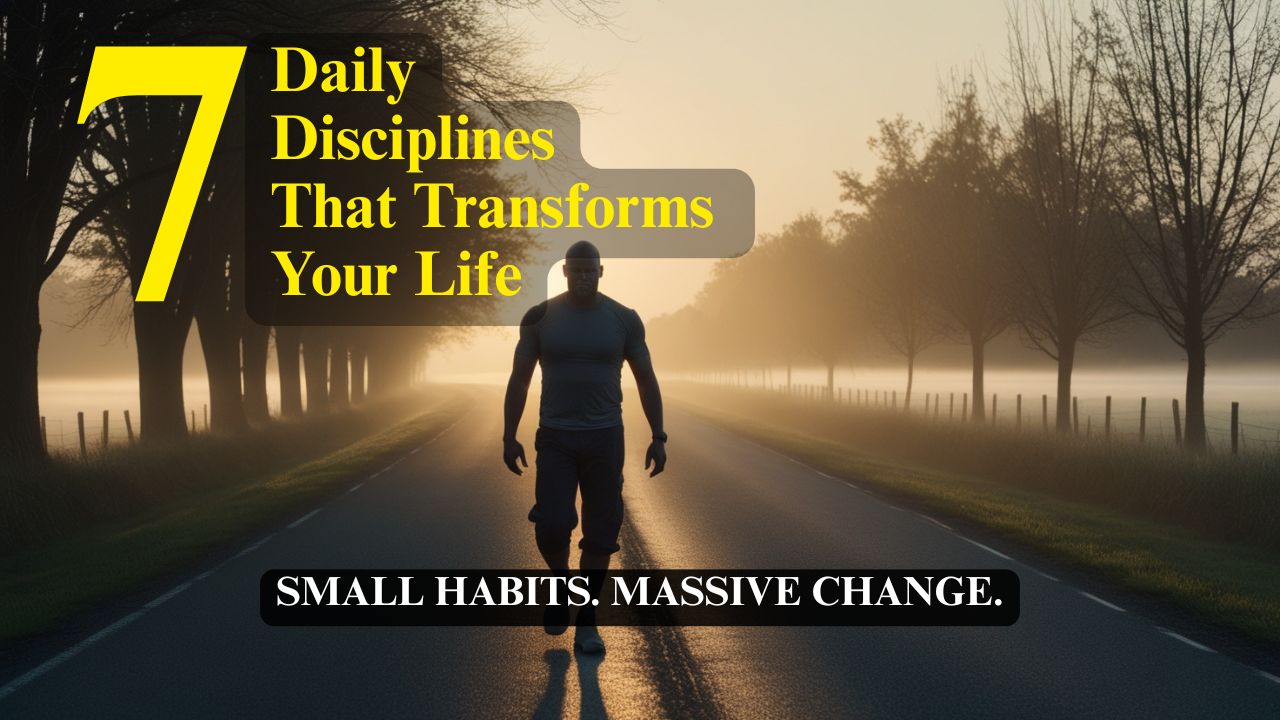
7 Daily Disciplines That Transform Your Life
The power to act with intention, to align your actions with your values, and to move steadily toward a life of purpose—even on days you don't feel like it.
Read Full Article
How to Build Unbreakable Discipline
Discipline is built—habit by habit, choice by choice, day by day. And the most powerful kind? The kind that doesn’t crack under pressure. The kind that becomes part of who you are.
Read Full Article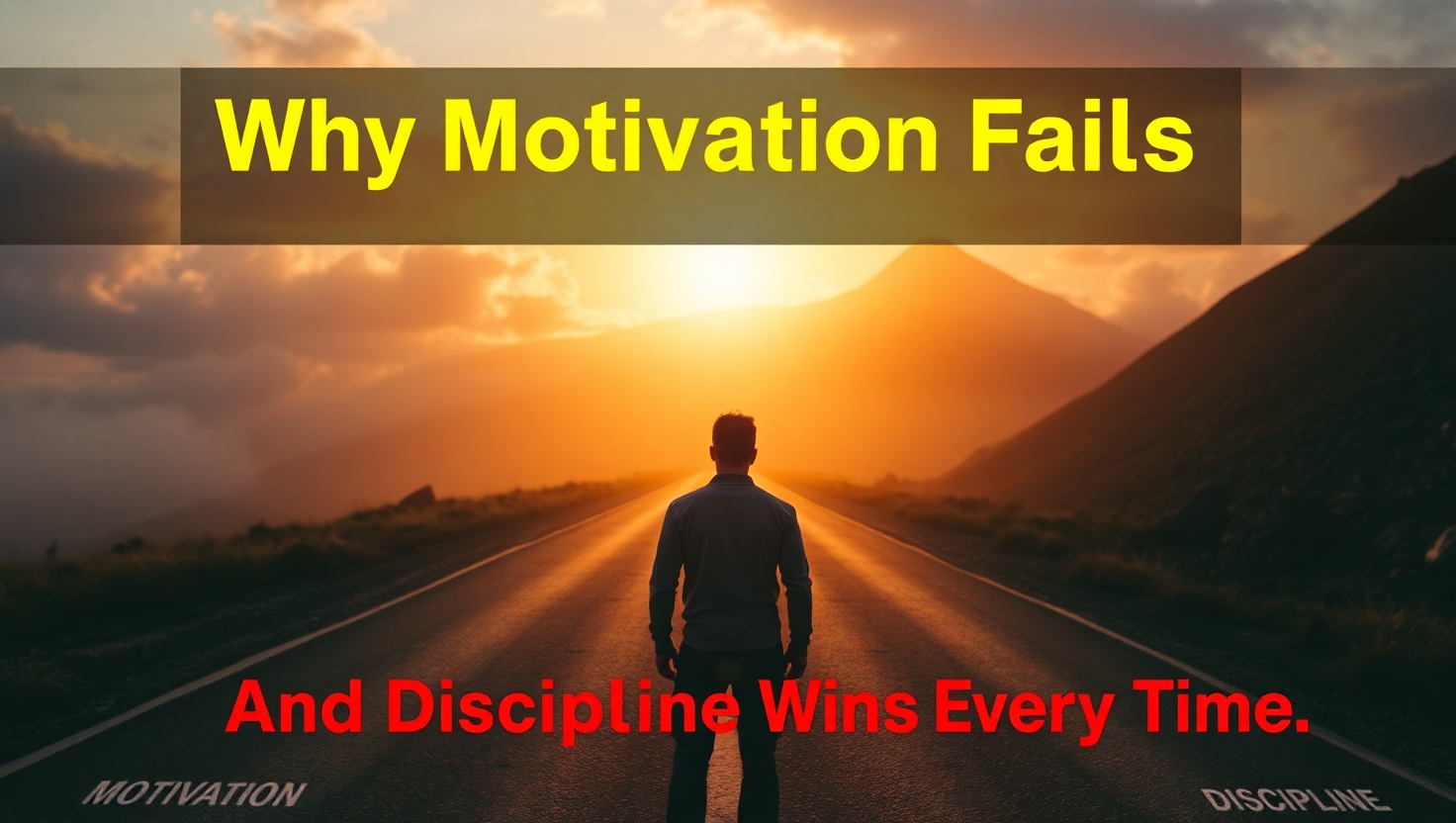
Why Motivation Fails And Discipline Wins Every Time
We all love the feeling of motivation—that surge of energy, that rush of inspiration that makes everything seem possible. But here’s the problem: motivation is unreliable. It’s emotional. It comes and goes. And if your goals rely on you “feeling like it,” you’re already in trouble.
Read Full Article
Discipline Over Desire
Desire is loud. It burns bright, talks fast, and loves to dream. But desire alone doesn't achieve much. Every person has desires. Very few have the discipline to bring them to life.
Read Full Article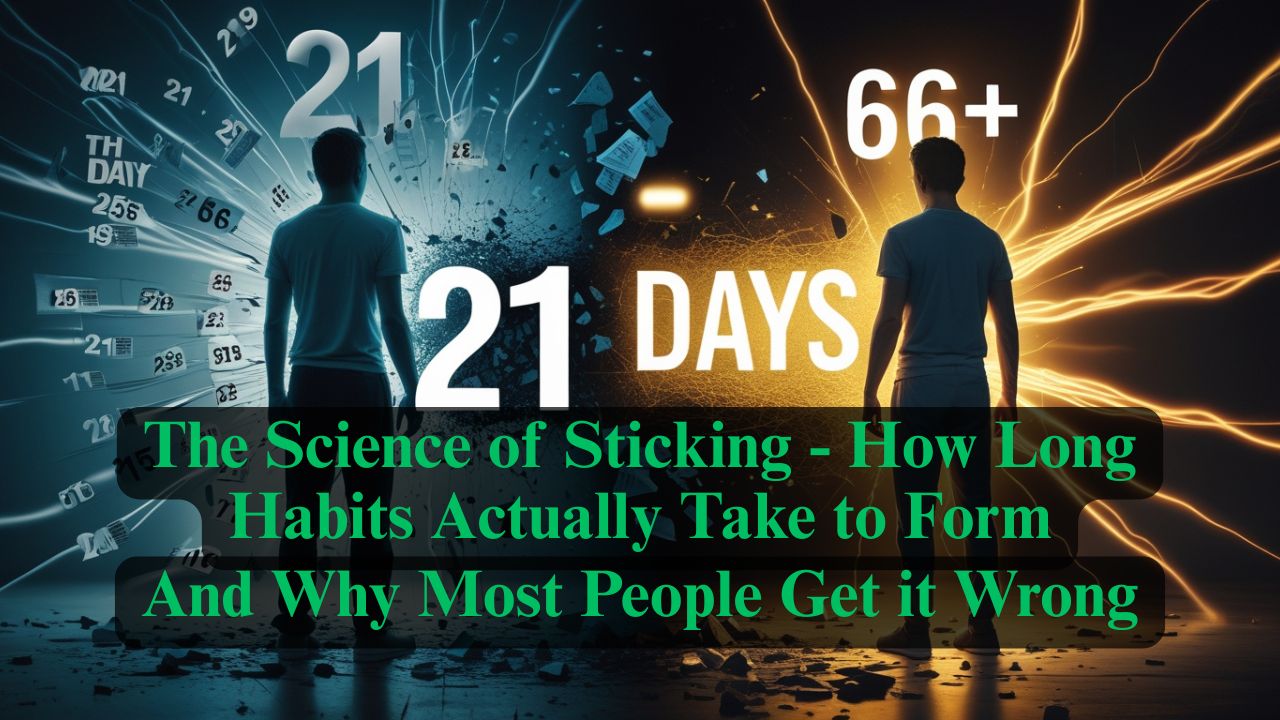
The Science of Sticking
If you've ever tried to build a new habit, you've probably heard that it takes 21 days. This number gets thrown around so often that it feels like scientific fact.
Read Full Article
The Stacking Strategy
What if I told you that the habits you already have—even the ones you consider "bad"—could become the secret weapons for building the habits you want?
Read Full Article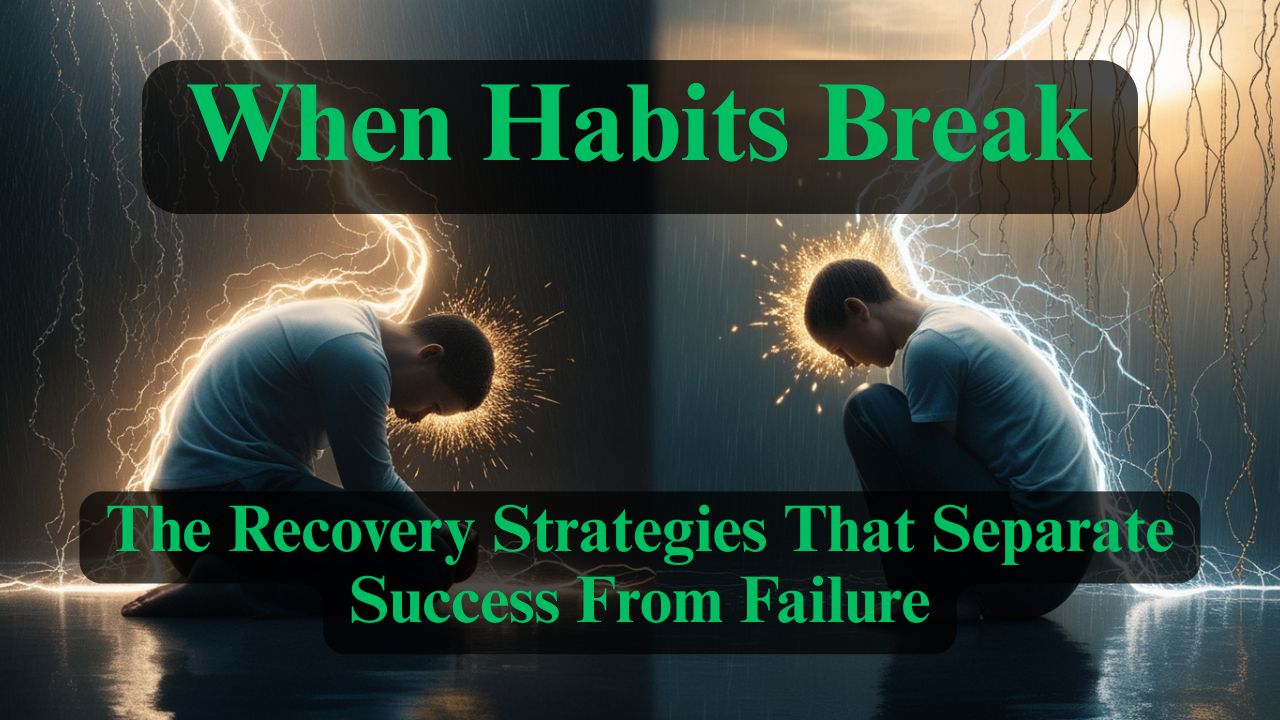
When Habits Fail - The Recovery Strategies That Separate Success From Failure
Here's what nobody tells you about building habits: you will fail. You'll miss days. You'll fall off track. You'll have weeks where everything falls apart.
Read Full Article
The Ultimate System - Designing a Life Where Good Habits Are Inevitable
You've learned to recognize habits, understand their formation timeline, stack them strategically, and recover from setbacks.
Read Full Article